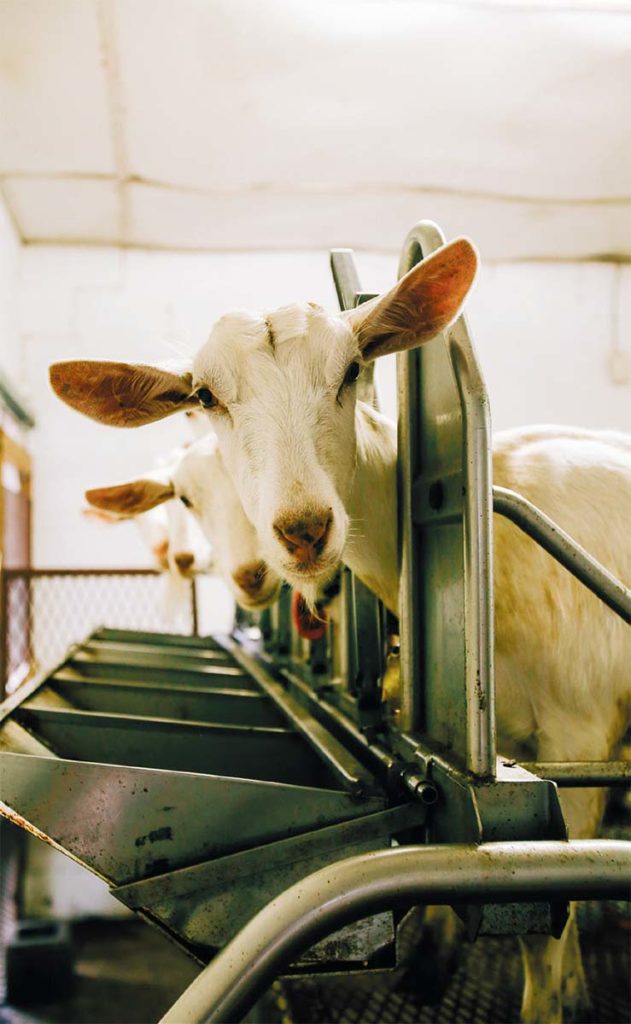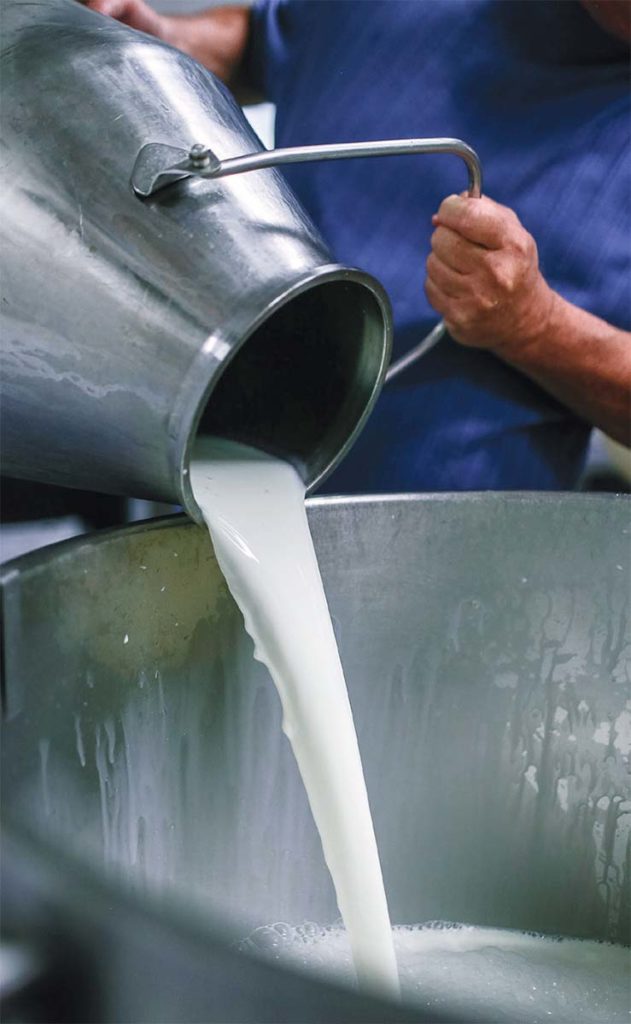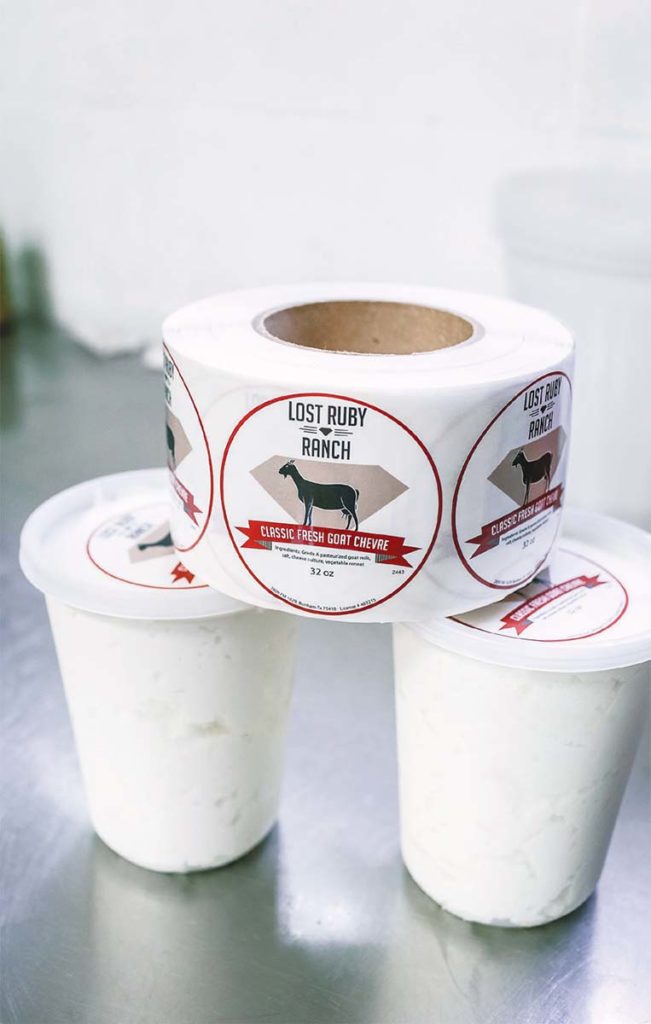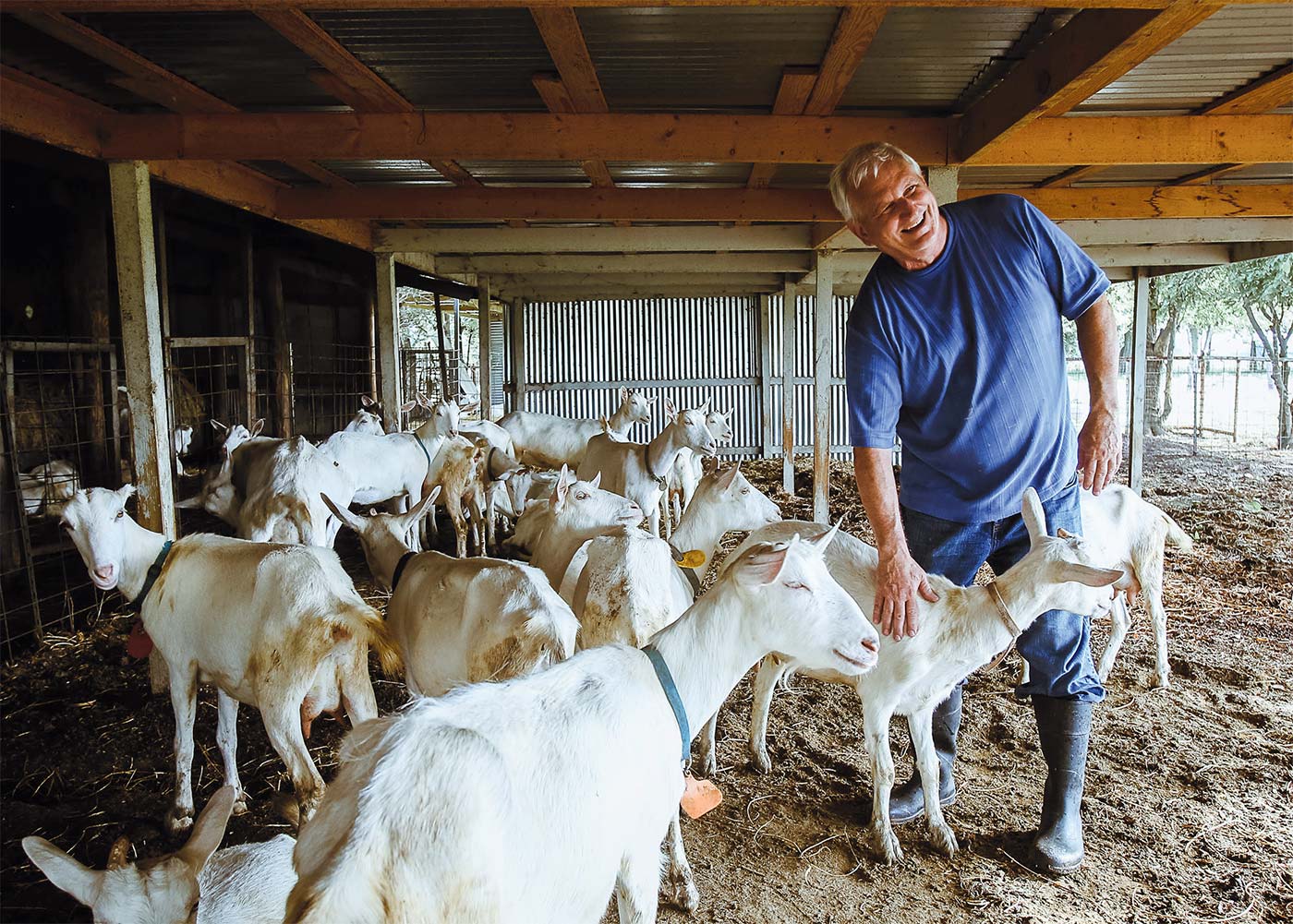
A TEXAS WAY WITH CHEVRE
Story by Karel Holloway Photography Melinda Ortley
At Lost Ruby Ranch, Paul Allen found his niche
Paul Allen studied goats.
He took classes in selecting and caring for goats. He talked to university goat experts. He attended goat conferences and worked on goat ranches.
After decades of immersing himself in all things goat, he was ready to retire. And start a goat ranch.
In five years, he has become a highly successful goat-cheese producer with his chèvre in demand at restaurants and farmers markets.
Allen, who had a successful career in technology and telecommunications, began thinking almost 30 years ago about what he’d do when he retired.
He wanted anything but the corporate life, and he wanted to stay busy. His father ran some cows on a farm in Bonham, and Allen thought about a dairy. That didn’t seem profitable, and raising cows seemed a little sedentary.
It’s not that he has a passion for goats. Rather, he has found that the sweet-tempered but lively goats fit his needs.
He started Lost Ruby Ranch in Bonham five years ago and began milking four years ago. He produces cheese almost daily. Thanks to demand, it’s sold before it’s finished.
“It’s a great product. He can’t make cheese fast enough.” — Aaron Staudenmaier
Why Lost Ruby? He loves telling the story of how the ranch got its unusual name. His aunt was one of the officials at the famous Nuremberg trials, and somehow she came home with a large ruby ring—the details of her acquisition have been lost to time—which she gave to her brother, Allen’s father. He wore it for years. Then, as he got older, he lost weight. Somewhere the ring slipped off his finger. “We’ve looked and looked,” Allen says. “We’ve been over the whole place with metal detectors, and we haven’t found it.”
He has found satisfaction with his goats. Overseeing them and making the cheese does keep him busy in the way he envisioned. Through the years, as he talked about starting the farm and spent years learning about goats, his wife Karen and family thought he was nuts. He persisted in his interest and his study. He worked for six years on a goat farm while keeping up his regular job.
A few years ago, he began building the cheese-production areas and the milking room. First was the foundation, then the roof. He bought equipment and began installing it. “I used my bonus checks to start,” he says.
Over the years, he thought about quitting and just plunging into cheese. “I guess I just didn’t trust myself enough to do it.” Then, as he neared 60, layoffs were coming to the telecommunications industry, and he decided it was time.
His wife wasn’t convinced. They still live in McKinney, and she has only been to the farm twice since it opened. He commutes to work every day. She liked the idea a lot more when “I started handing her checks she could take to the bank,” he says and smiles.
The gate to the milking room opens, Daisy bounds in and takes her place on the line. She’s followed by J. Nettles, Mimi, Gracie and Connie.
The goats line up (left) for milking. Freshness is the key to making great cheese, says Paul Allen.
His first customers were at farmers markets. He’d put his cheese out and sell it almost immediately. Then he started marketing to restaurants.
“Paul’s got a real hard-hitting sales technique,” says Aaron Staudenmaier, concept chef for Whiskey Cake restaurants. Allen walks in, gives the chef a sample. “Then he gives you a phone number and leaves. You taste it, call him and say ‘I want some of this.’”
His cheese became the basis for a Whiskey Cake staple. The goat cheese fondue—with olives, roasted tomatoes, garlic, fresh thyme and olive oil—is a favorite (see the recipe online at Edible Dallas & Fort Worth). “The thing we really love is, first of all, it’s a great product,” Staudenmaier says. “He can’t make cheese fast enough.”
Allen says his cheese is so good because it is made from fresh goat’s milk with the least possible handling. If cheese is commercially made, it’s likely to be weeks old.
His Saanen goats also are key. They give good milk with a high fat content. They are docile and well-behaved, Allen says—quieter than more commonly used Nubian goats.
The Saanens are bred and raised on the farm. Lost Ruby milks 42 goats in shifts of six goats each twice a day. Allen plans to double the number of goats he milks next year.
Milking is a well-practiced maneuver.
The gate to the milking room opens, Daisy bounds in and takes her place on the line. She’s followed by J. Nettles, Mimi, Gracie and Connie. One by one, they push their heads through metal collars that snap down to hold them in place. Happily, they begin munching on their morning grain, ready to be milked.
Their teats are cleaned and the milkers attached. There’s a rhythmic swishing as the milk flows through a hose into a cooler in the next room. It takes about 15 minutes. They finish their grain, are released and wander the pasture, usually keeping close to the barn until the whole procedure is repeated 12 hours later.
Katie Felden actually is the one up for the 5 a.m. milking. She and her family rent the house on the property. “She milks, and I come about seven and make the coffee,” Allen says. Felden began helping a friend with the milking and gradually took over.
When the milking finishes, Felden cleans the equipment with hot water, then acid, then bleach, then hot water again. Another employee, Alex Melger, takes care of the evening milking.
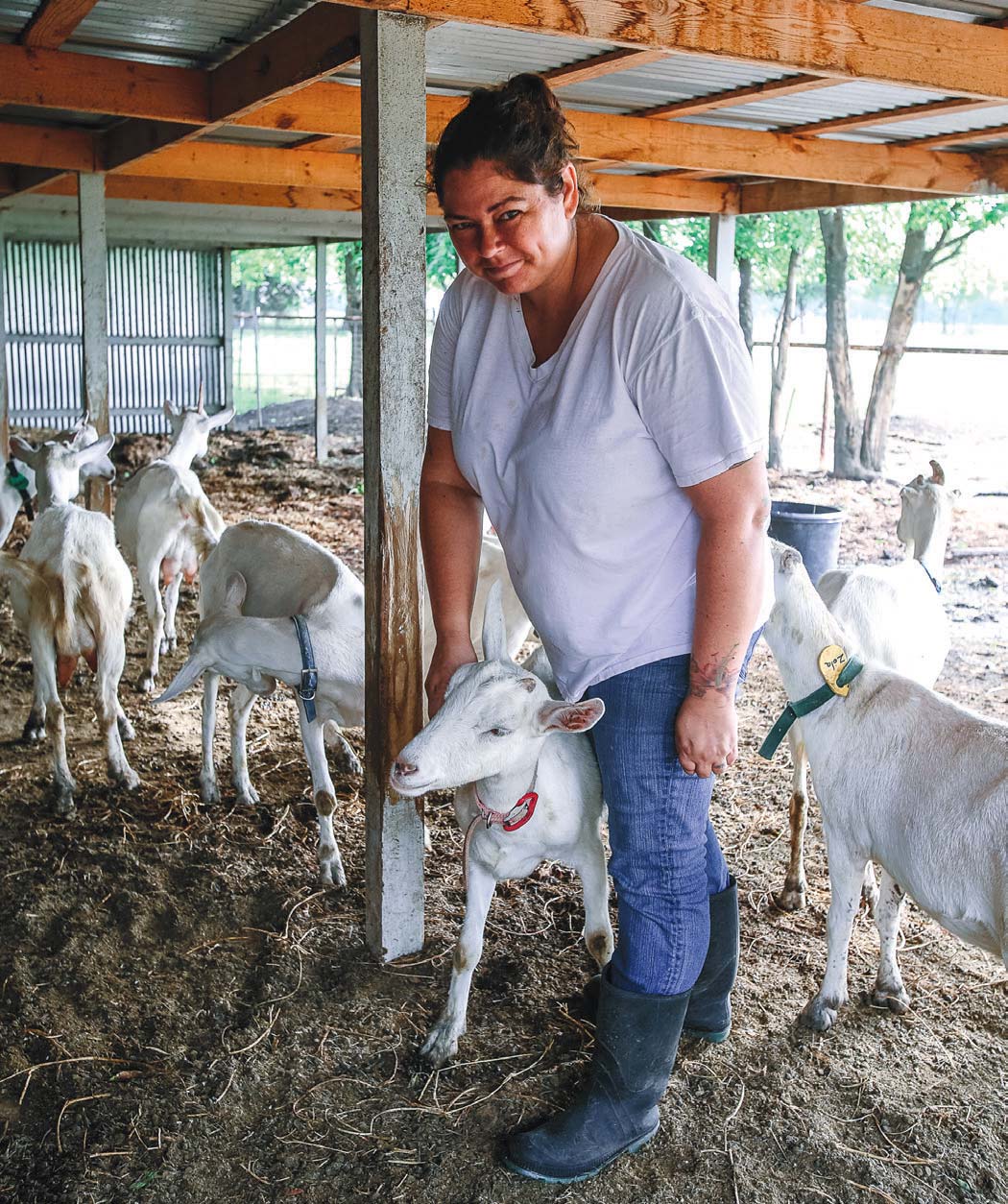
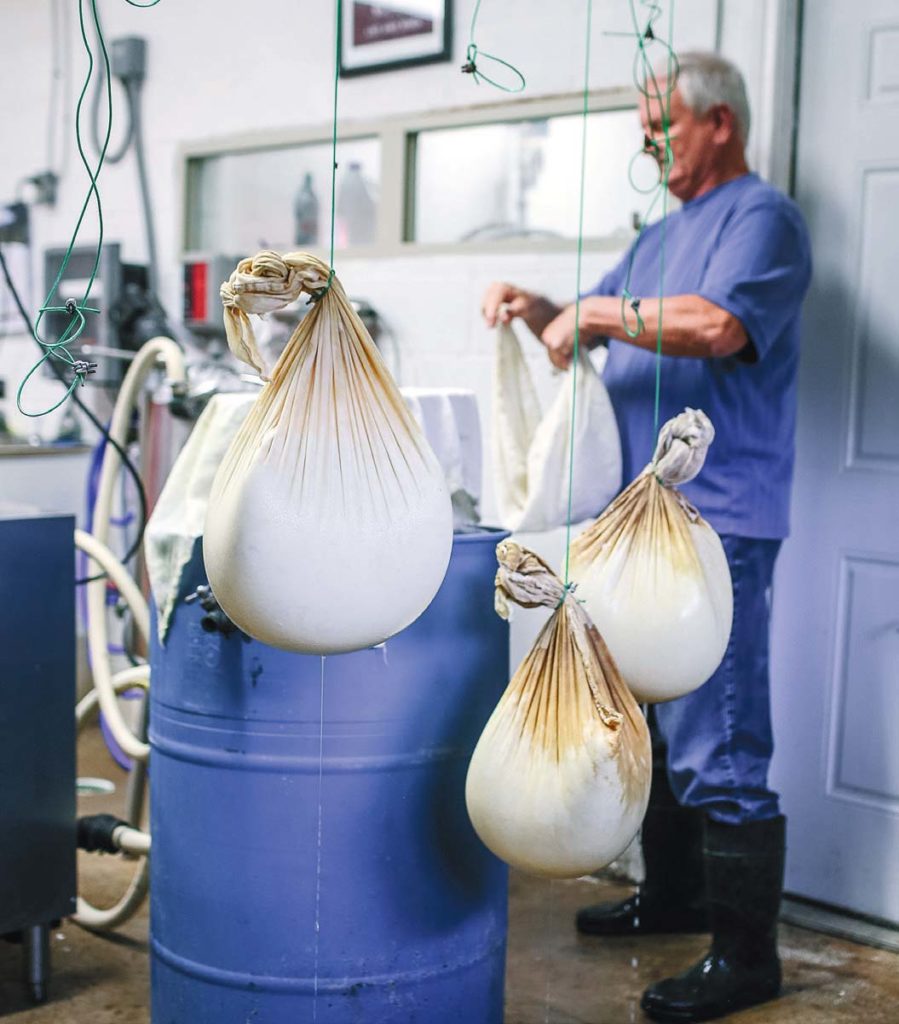
All in all, each goat produces about a gallon of milk a day. The does get a break during several months while they are pregnant. “December to February is vacation time,” Allen says. To meet demand, he’s buying about 100 gallons of milk a week from a Sulphur Springs goat farm.
The milk is cooled then heated to pasteurize it. It’s cooled once more to the proper temperature, then vegetable rennet and cheese culture are added. Curdles form and are scooped off. It’s the curdles that make the cheese. All this in a tiny room that it’s hard to move around in.
Allen makes the cheese himself about six pounds at a time in a large stainless steel mixing bowl. He mixes in the salt and, sometimes, flavors. From 20 gallons of milk he gets 22 pounds of cheese. Most of the cheese for restaurants is plain. For markets, he has Chipotle, Spicy Pecan, Chive, Garlic Chive, Dill Onion, Sun-dried Tomato and Cinnamon Honey. The flavors came from trial-and-error. He’d add some flavorings, give it to his sister, Denise Green in Ector, to taste and adjust depending on her reaction.
He sells at the Dallas and Coppell farmers markets, and occasionally others. “Usually, I’m the only one selling goat cheese,” he says. More and more, the cheese goes straight to restaurants. Allen’s family was skeptical when he started Lost Ruby, but now his brother, Kelly Allen, has his own goat farm in Central Texas. Kelly sells to Whiskey Cake restaurant in San Antonio.
He made his sales pitch by asking, “If I can make cheese as good as my brother’s, will you buy it?”
“We said, ‘hell yeah,’” Staudenmaier says.
Goat farming and cheese-making are everything Paul Allen thought they would be and a little more. He’s so successful he needs more equipment. A bigger pasteurizer and cooler are on the wish list. And maybe an air-conditioner for the cheese room. While the hours are weird and the work hands-on, it has some advantages over the corporate life.
“I check with the CEO all the time,” he says with a straight face, “and there’s never been a lay off.”
Facebook: Lost Ruby Ranch
-
Karel Hollowayhttps://www.edibledfw.com/author/kholloway/
-
Karel Hollowayhttps://www.edibledfw.com/author/kholloway/
-
Karel Hollowayhttps://www.edibledfw.com/author/kholloway/
-
Karel Hollowayhttps://www.edibledfw.com/author/kholloway/










